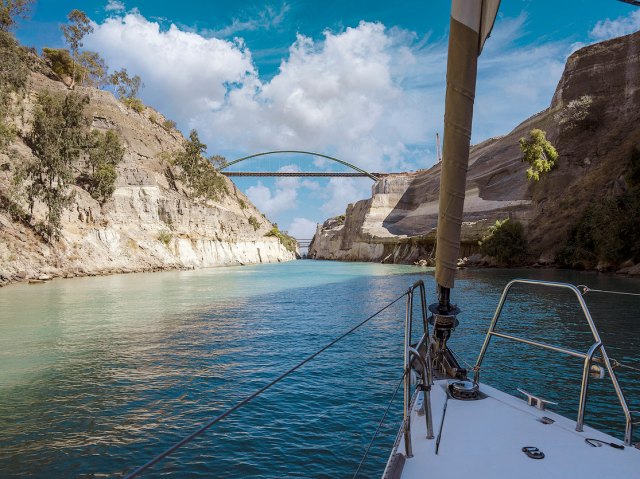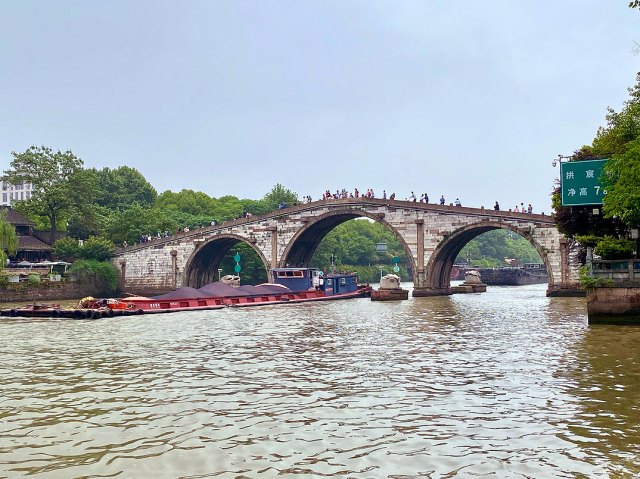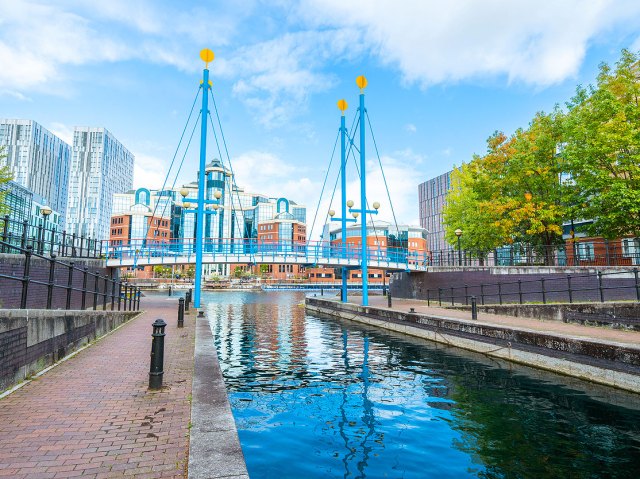Worldwide, canals play a significant role linking regions, navigating cities, and facilitating long-distance trade. While bulk transportation relies heavily on many of these artificial waterways, other, centuries-old canals through historic cities such as Venice and Amsterdam have turned into heritage tourism destinations. Here, we’ll take a look at the histories of seven of the most famous canals around the world.
Grand Canal – Venice, Italy

Venice is bisected by the magnificent Grand Canal, the biggest and most important of the Italian city’s 150 canals. Originally, Venice’s canals were natural channels running through a marshy lagoon, but over the centuries, engineers tamed and reinforced them to create the network we see today. The Grand Canal snakes right through the middle — about two miles long, it measures between 100 and 225 feet wide but only around 17 feet deep. Traveling along its length is an essential experience for any visitor to Venice. Hop on a functional vaporetto (Venetian water bus) or a graceful gondola to pass under the iconic Rialto Bridge and alongside historic mansions and palaces, such as the 15th-century Ca’ d’Oro or the 18th-century Palazzo Pesaro.
Corinth Canal – Greece

The story of the Corinth Canal stretches back more than 2,500 years. Corinth ruler Periander first mulled the idea of some kind of passage for boats in the seventh century BCE, but for various reasons had to give up on his plan. Instead, he devised a system where boats could be hauled overland across the isthmus. As the years passed, the idea of a canal was revisited on multiple occasions, until, finally, in the late 19th century, it became a reality. The Corinth Canal opened in 1893, cutting a deep, narrow channel between the Greek mainland and the Peloponnese peninsula. In doing so, it joined the Gulf of Corinth to the Saronic Gulf. However, modern freighters are far too large to pass through, so the canal is now mostly used for tourist traffic.
Suez Canal – Egypt

Opened in 1869, the Suez Canal connects Europe and the Mediterranean Sea to Asia and the Indian Ocean, via the Red Sea. Because of its strategic importance, the canal has played a pivotal role in history, including during the two World Wars and the Suez Crisis of 1956, which followed Egyptian president Gamal Abdel Nasser’s nationalization of the canal. The waterway once again hit the headlines in 2021, when a huge container ship, the Ever Given, ran aground and became wedged on a sandbank. It blocked the passage of several hundred other vessels for five long days, at a cost of billions of dollars. Eventually, authorities figured out a way to refloat the behemoth and get canal traffic, and with it the global supply chain, moving again.
Herengracht, Prinsengracht, and Keizersgracht – Amsterdam, The Netherlands

The historic canal trio of Herengracht, Prinsengracht, and Keizersgracht form a major part of Amsterdam’s UNESCO-listed Canal District (Grachtengordel). They are predated by the Singel, a medieval canal that created a moat around the old city. During the city’s 17th-century Golden Age, the excavation of three more canals became the catalyst for an explosion in trade and growth — which caused Amsterdam’s population to soar rapidly. Herengracht (the Gentleman’s Canal) is considered the city’s most important canal; the mayoral residence is located here. Keizersgracht is the city’s widest canal, though on the original plans it was intended to be a leafy boulevard, until locals lodged complaints bemoaning a lack of boat access. The third, Prinsengracht, was named after the Prince of Orange and is where you’ll find Anne Frank’s House.
Jinghang Waterway – China

China’s Grand Canal, also called the Jinghang Waterway, was inscribed on the UNESCO World Heritage Site list in 2014. It’s not only the oldest human-made navigable canal on the planet — the earliest sections date back to the fifth century BCE — but also the longest. Beginning in Beijing in the north, the Grand Canal stretches all the way to Hangzhou in the south, connecting five of China’s major rivers, including the Yellow and Yangtze. In total, the canal covers a distance of more than 1,100 miles. Throughout its history, the canal has been of vital importance to the transportation of goods, including food products such as grain. At one time, it was also useful for defense — water could be held back by dams and released to create floods that would hamper the advance of invaders.
Manchester Ship Canal – England

The 37-mile-long Manchester Ship Canal opened in 1894, linking the English city of Manchester to the estuary of the River Mersey near Liverpool. At the time, it was the world’s longest river navigation canal and provided an invaluable link between the industrial areas of North West England and the coast, transporting commodities such as cotton and grain. Despite being a considerable distance inland, Manchester quickly became an important port city as a result. Though larger and better equipped ports have since taken precedence, passenger ferry companies now run leisure excursions along the canal so that visitors can admire the Victorian-era architecture and appreciate its lasting legacy.
Panama Canal

When the Panama Canal opened in 1914, it revolutionized shipping. Instead of a long and often treacherous detour around Cape Horn, vessels could pass quickly and safely between the Atlantic and Pacific Oceans through the Isthmus of Panama. From 1903 to 1979, the Panama Canal Zone was a U.S. territory, and until 1999, it was jointly managed by the U.S. and Panama. Today, it’s part of Panama. The 51-mile canal is of vital importance to world trade but is also a popular tourist destination in its own right. Visitors can see landmarks such as Lake Gatun, created by damming the Chagres River; the two-stage Miraflores Lock; Culebra Cut, where the canal crosses the continental divide; and the Centennial Bridge.
More from our network
Daily Passport is part of Inbox Studio, which publishes content that uplifts, informs, and inspires.























